According to Mass Audubon, there are over 300 species of birds that call Massachusetts home. Many of these species spend their winters in Massachusetts, but some are more common than others.
Whether you live in Massachusetts or are only visiting for the winter, keep your eyes peeled for the birds you may see. Massachusetts’s most common wintertime birds are the common American robin, the bold northern cardinal, and the feisty Canada goose.
1. American Crow (Corvus brachyrhynchos)

American crows are highly intelligent birds.
©del13/Shutterstock.com
Known for their raucous calls and deep green-black feathers, American crows are one of the most common winter birds in Massachusetts.
Most people dislike crows and don’t want them to come to their yard. But, if you’ll lure these beautiful big birds to your home, consider offering fruits, grains, or nuts. American crows are incredibly intelligent critters. They will hide their food and save it for when supplies are scarce.
2. American Goldfinch (Carduelis tristis)
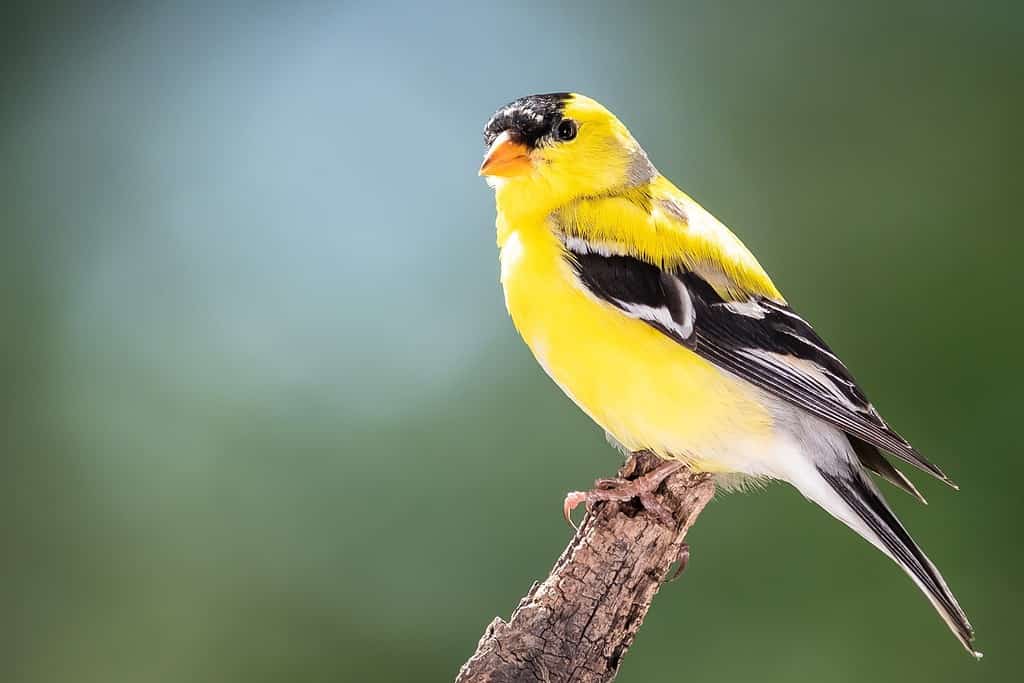
American goldfinches are unique flyers who seem to bounce in the air.
©rck_953/Shutterstock.com
These beautiful birds have distinctive, bright yellow feathers during the warm months. Their colors fade over winter, becoming duller grays and browns.
American goldfinches live in large flocks and are common around bird feeders. Consider providing thistle seed to these birds over winter.
These birds almost seem to bounce when they’re flying. They flap their wings, tuck them tight against their body, and then flap them again.
3. American Robin (Turdus migratorius)
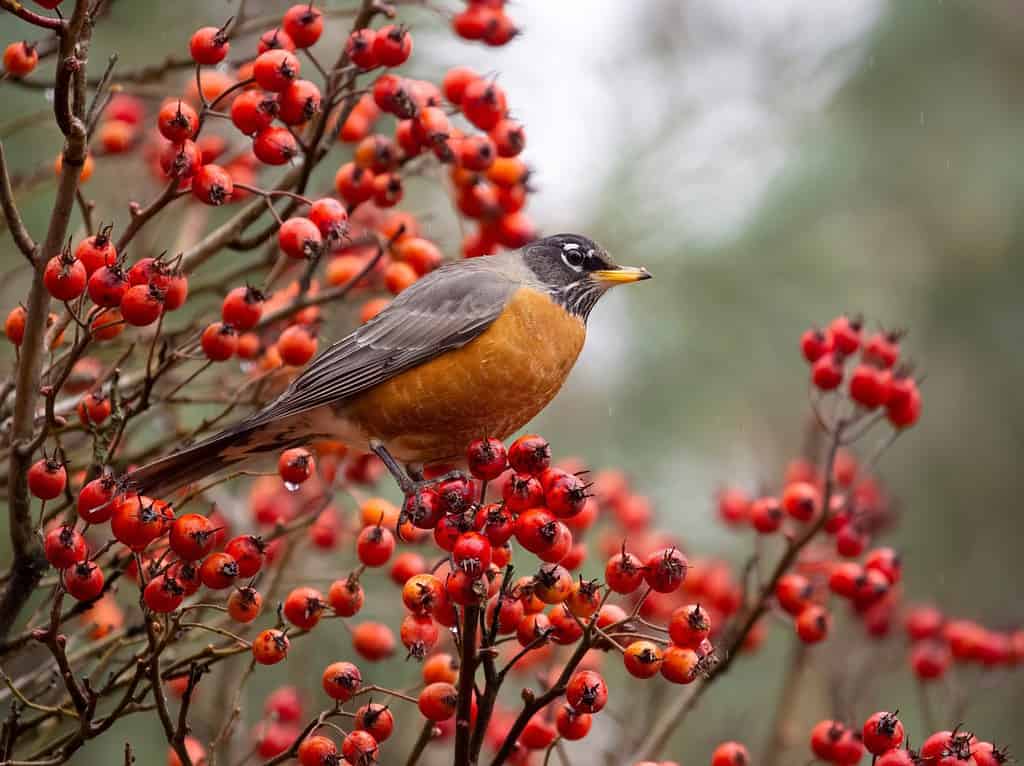
American robins symbolize spring, but they live in Massachusetts year-round.
©Erni/Shutterstock.com
These common brown birds symbolize the coming spring in many cold states. Yet, hundreds of these birds overwinter in Massachusetts. Milder winters with abundant food attract far more robins than harsher winters.
American robins are ground foragers. Consider scattering tiny pieces of apples, berries, or robins on the ground for them to eat.
4. Black-Capped Chickadee (Parus atricapillus)
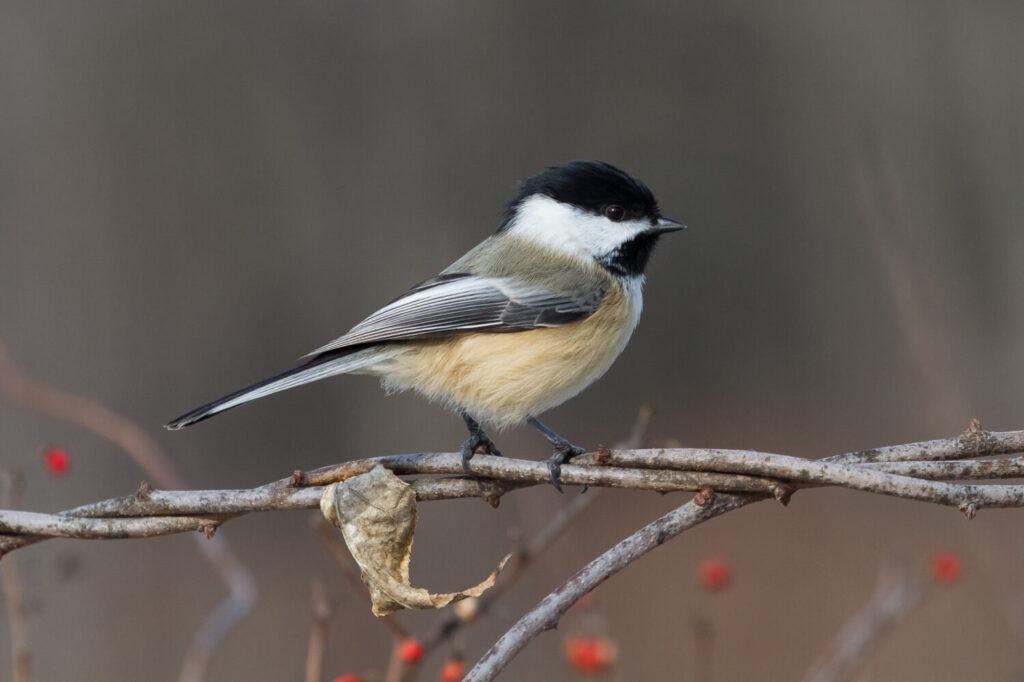
Black-capped chickadees get their names for their thick black heads.
©Paul Roedding/Shutterstock.com
These little birds don’t mind the cold and will flit around the trees singing, even in the coldest weather. Black-capped chickadees like to spend their time with other birds during winter. You’ll often see them with downy woodpeckers, nuthatches, and titmice.
Another fun fact is that the black-capped chickadee is Massachusett’s state bird.
5. Blue Jay (Cyanocitta cristata)
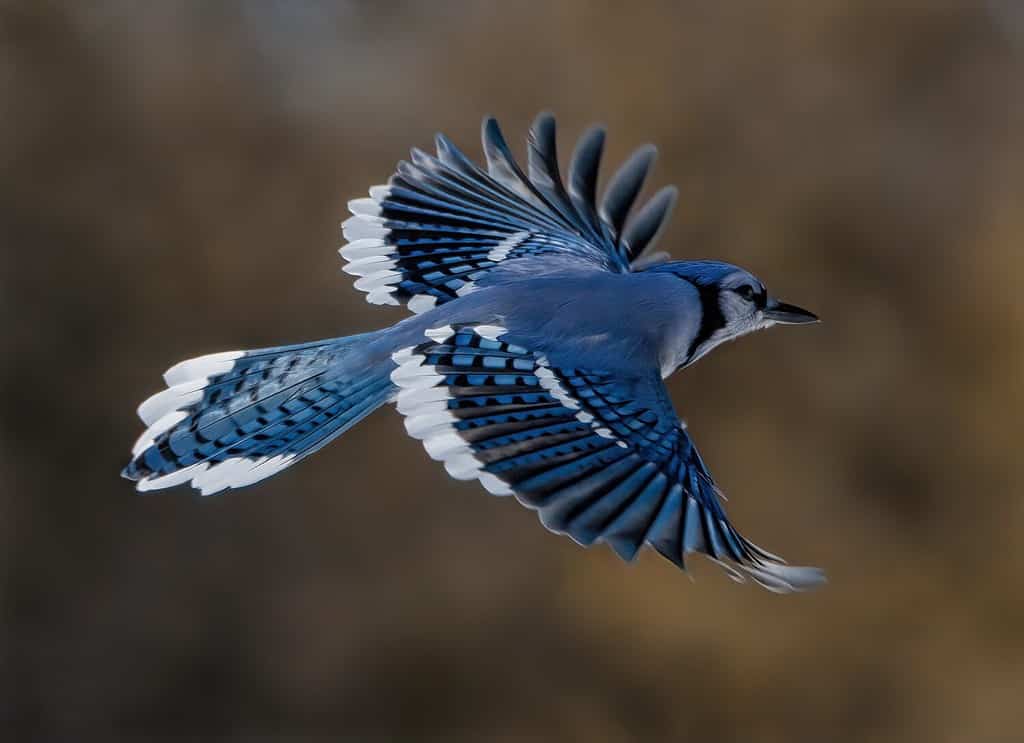
Their bright blue plumage makes blue jays one of the most distinctive birds in Massachusetts.
©Fiona M. Donnelly/Shutterstock.com
Easily one of the most distinctive birds, blue jays are even easier to spot against the backdrop of winter snow.
These bright blue birds love to sing and can produce various sounds. Blue jays are feisty and clever members of the crow family. They aren’t afraid to chase away birds larger than themselves.
Consider providing blue jays with acorns over the winter — they are a favorite.
6. Canada Goose (Branta canadensis)
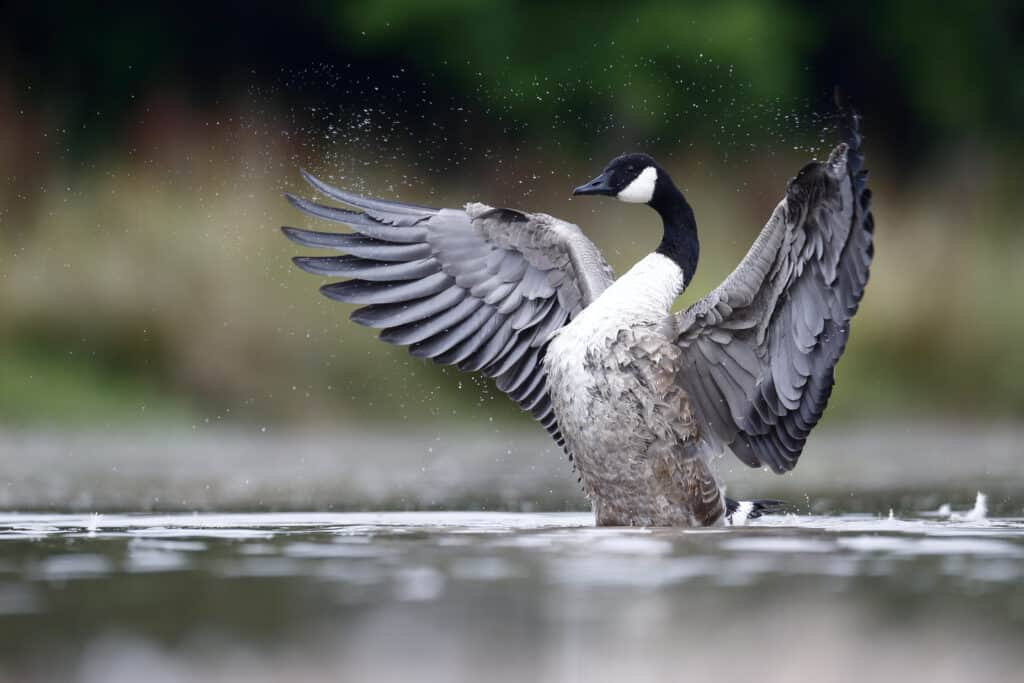
Flapping wings are sometimes a sign of aggression in Canadian geese.
©Erni/Shutterstock.com
Canada geese are known for their fiery personalities, especially if you get too close. These large, brown, gray, and blackbirds produce a distinctive “honking” vocalization.
These large waterfowl rarely migrate if born and/or bred in Massachusetts. Still, they may move from their typical summer homes in search of water bodies that aren’t frozen.
The Massachusetts Division of Fisheries and Wildlife (MDFW) asks that you not feed geese or other waterfowl, even over winter. Feeding waterfowl can cause problems, especially if you provide the wrong foods, like bread, which can be deadly.
7. Carolina Wren (Thryothorus ludovicianus)
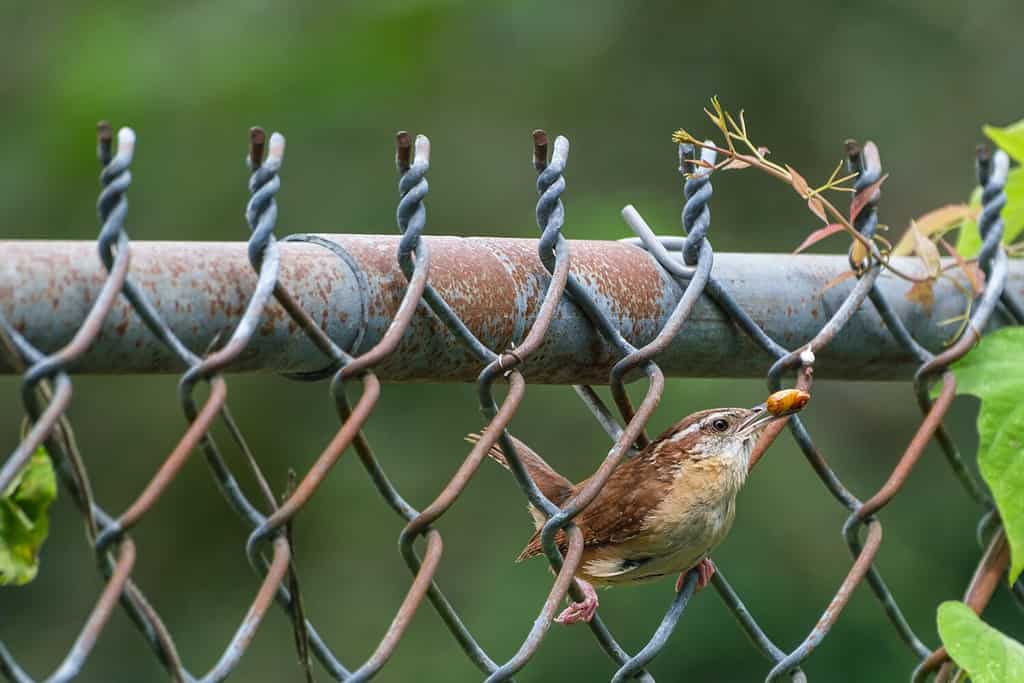
These little brown birds look like they have eyebrows because of the white stripes above their eyes.
©William A. Morgan/Shutterstock.com
These little, fluffy, reddish-brown birds have distinctive white “eyebrows” and oddly angled tails. They are common in suburban neighborhoods year-round, singing their active tunes.
Carolina wrens are interesting birds because you may or may not see them. They are often bold little critters who sing loudly and protect their homes. Other times, they are shy and prefer to hide themselves.
You aren’t likely to see Carolina wrens around your bird feeder. Still, you can scatter fruits and weed seeds for a better chance of seeing them.
8. Cedar Waxwing (Bombycilla cedrorum)
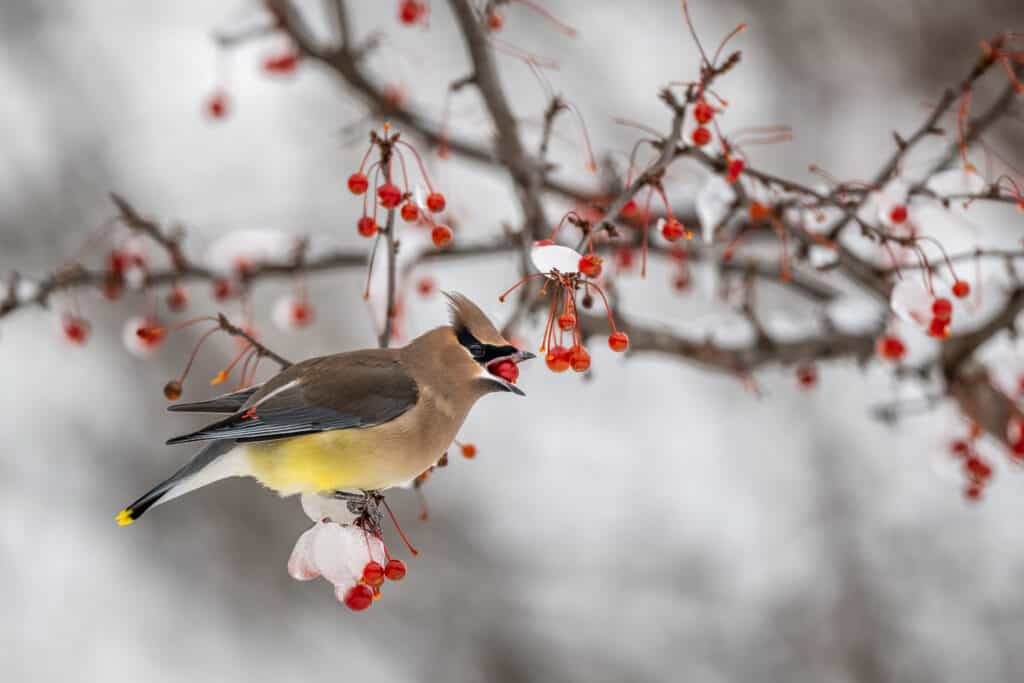
These birds have black masks across their eyes and yellow tail tips.
©Skyler Ewing/Shutterstock.com
A distinctive bird, cedar waxwings, have black masks running across their eyes. You’ll also notice red “fingertips” at the ends of their wings. They also have bright yellow bellies and tail tips.
You aren’t likely to see cedar waxwings at your bird feeder. Consider planting fruit or berry shrubs in your yard to entice them. Cedar waxwings love fruits and berries. A fully stocked shrub is easy pickings over winter.
9. Dark-Eyed Junco (Junco hyemalis)
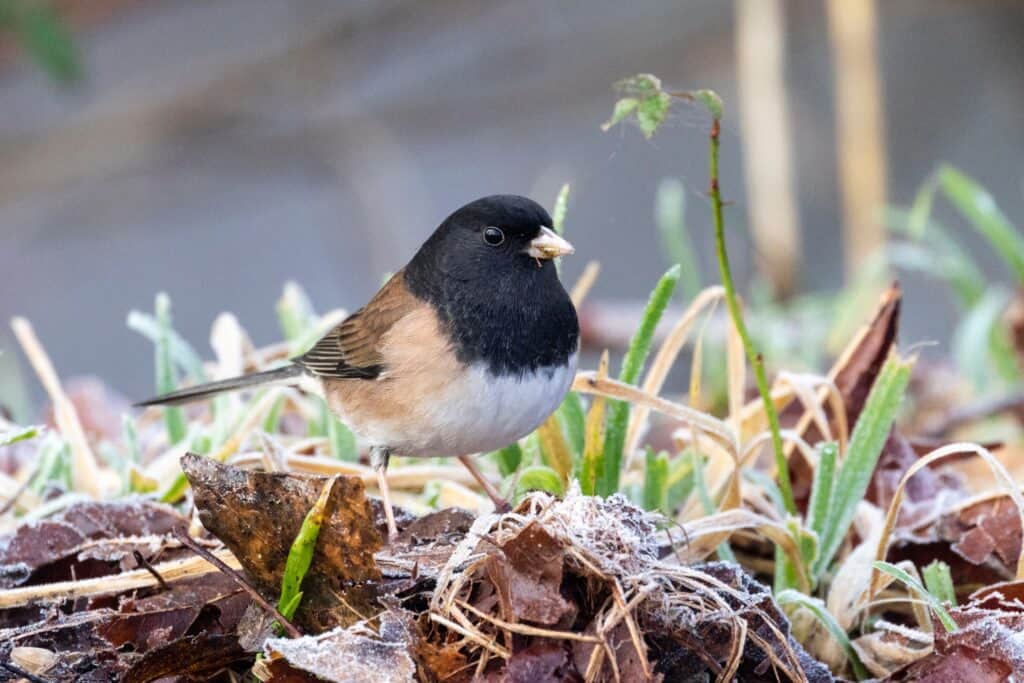
Dark-eyed juncos are one of the most common winter birds in Massachusetts.
©Feng Yu/Shutterstock.com
Just as robins are a symbol of spring, dark-eyed juncos are a symbol of winter. Many of these “snowbirds” migrate to Massachusetts in the fall and stay until April. Some choose to remain in the state year-round.
Dark-eyed juncos are seed-eating ground foragers. They gather in small groups to stay safe when eating.
10. Eastern Bluebird (Sialia sialis)

Their blue wings and red breasts make eastern bluebirds highly distinctive.
©Steve Byland/Shutterstock.com
These bright blue birds with reddish-brown breasts are becoming more common in Massachusetts. They flock together during the winter months, gathering for migration.
Eastern bluebirds are ground foragers. Consider scattering soft fruits around your yard to entice these visitors.
11. European Starling (Sturnus vulgaris)
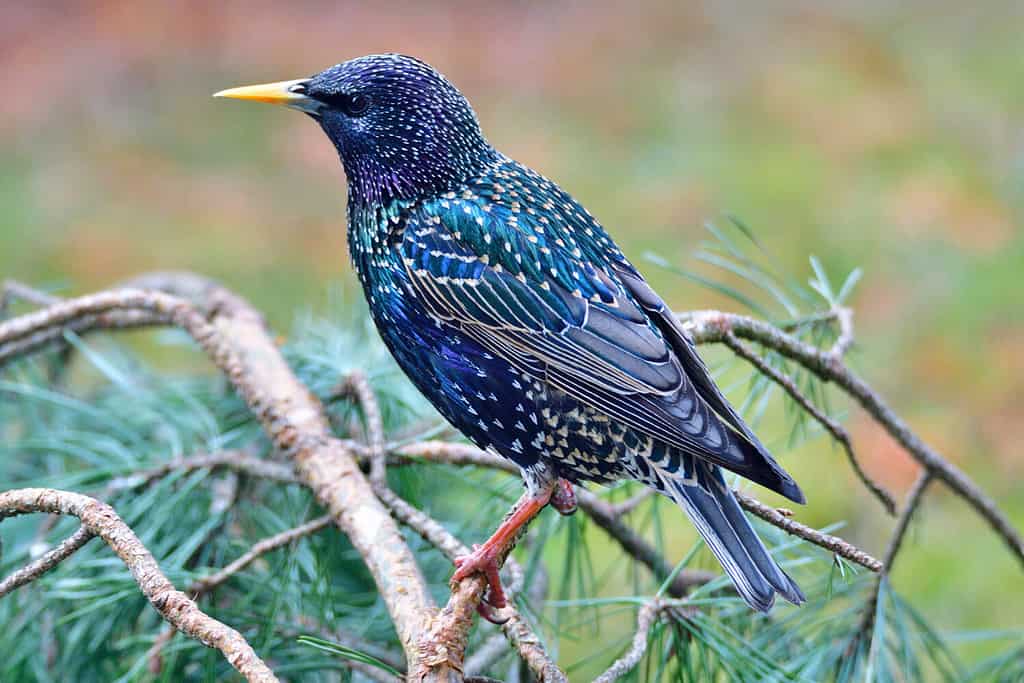
European starlings have deep black bodies with white speckling over winter.
©Karin Jaehne/Shutterstock.com
These large non-native birds are distinctive. They have deep black feathers dotted with white and iridescent blues and greens. The white speckles are common on their feathers over the winter months and help them blend in with the falling snow. As the weather warms, they lose much of that speckling in place of the green and blue.
European starlings are loud birds that gather in large numbers. They live in Massachusetts year-round and pick at seeds and insects on the ground.
12. Herring Gull (Larus argentatus)
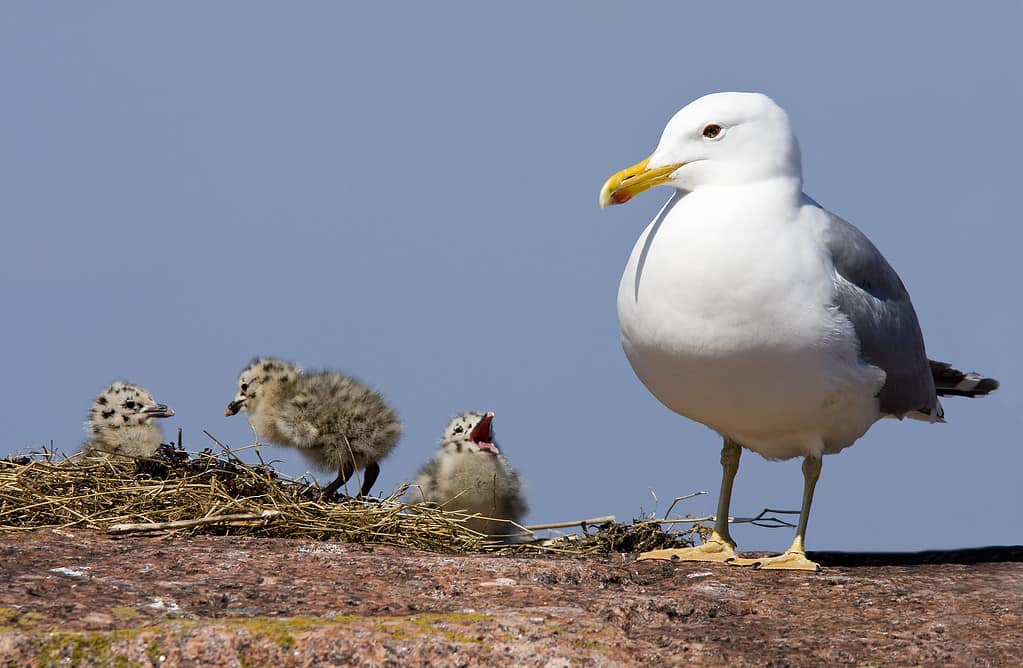
An adult Herring Gull with three chicks.
©aseppa/ via Getty Images
In the early 1900s, herring gulls were only common during Massachusetts winters. They began breeding in the state in small numbers between 1912 and 1931. Today, breeding throughout the state is far more common.
13. Mallard (Anas platyrhynchos)
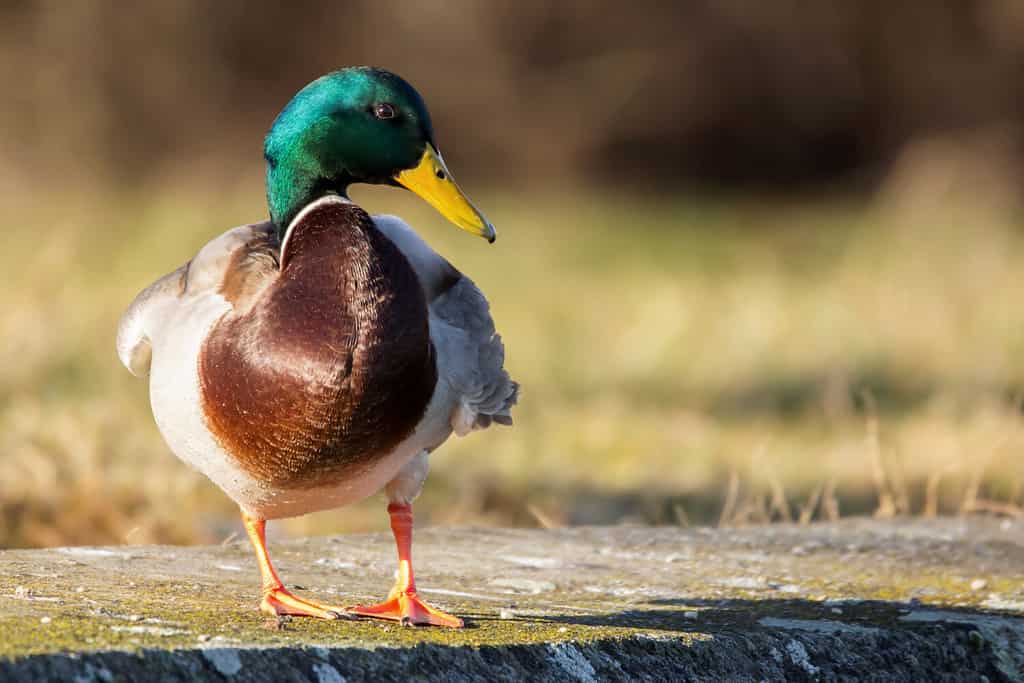
Male mallard ducks have deep green heads.
©Luka Hercigonja/Shutterstock.com
These ducks are the most common duck species seen throughout Massachusetts year-round. They are prevalent sites in suburban and urban parks.
If you own a swimming pool, you will likely become the temporary host of a mating pair of mallards. The falling snow, rain, and leaves create a personal, makeshift pond on pool covers. These little habitats are perfect for Mallards over winter.
Like Canada geese, you should not feed Mallards or any other waterfowl.
14. Mourning Dove (Zenaida macroura)
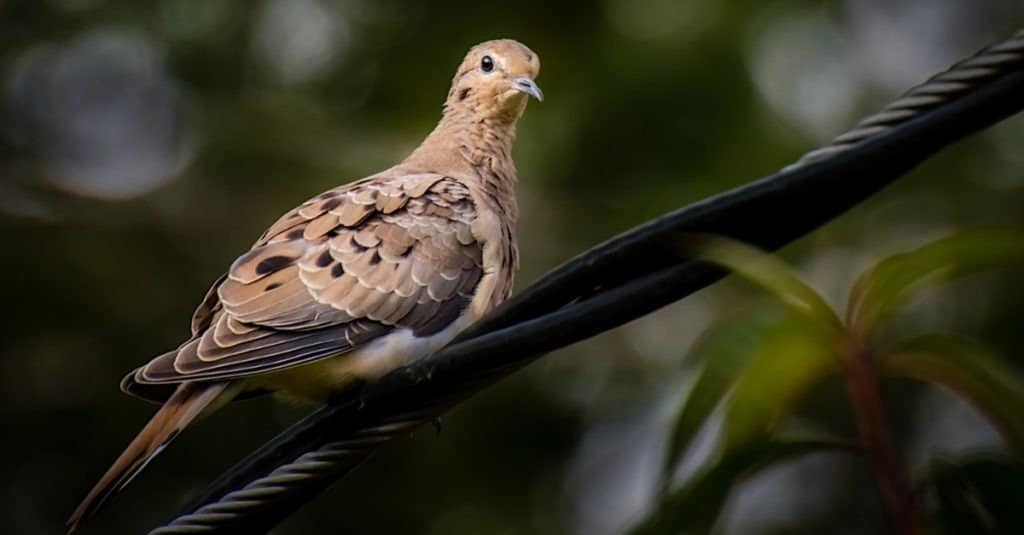
Mourning doves get their name because of their soft, sad cooing.
©Jay Gao/Shutterstock.com
These elegant, fluffy brown-gray birds are mainstays of Massachusetts, even throughout the winter. Their soft, cooing voices are pleasant to listen to year-round.
Mourning doves live in large flocks. They enjoy visiting agricultural fields and bird feeders over winter. They forage on the ground with their little bobbing heads for seeds.
15. Northern Cardinal (Cardinalis cardinalis)

Male northern cardinals are bright red, while females are dull brown.
©Bonnie Taylor Barry/Shutterstock.com
These elegant, bright red birds are another famous symbol of winter. Northern Cardinals live in Massachusetts year-round. But, the males’ flashy red colors look especially elegant against winter’s white snow and dead foliage.
Northern cardinals typically form mating pairs during the winter. They are common in suburban backyards and are fond of seeds, fruits, and insects.
16. Northern Mockingbird (Mimus polyglottos)
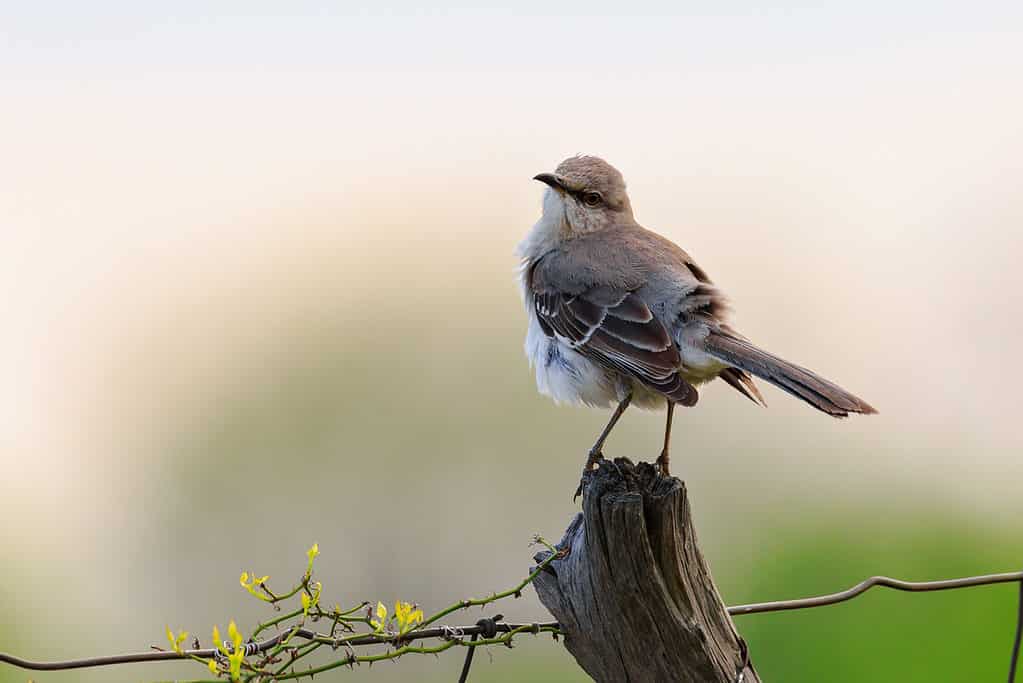
A northern mockingbird perched on an old fencepost.
©iStock.com/cmcneill17
These active, gray birds are common in neighborhoods where they find shelter in shrubbery.
During the spring and summer, northern mockingbirds are loud singers who produce various vocalizations.
They are more subdued during the winter, preferring to keep to themselves and stay quiet. They hide in thick shrubs that protect against the harsh weather and eat mostly fruits and berries.
17. Red-Bellied Woodpecker (Melanerpes carolinus)
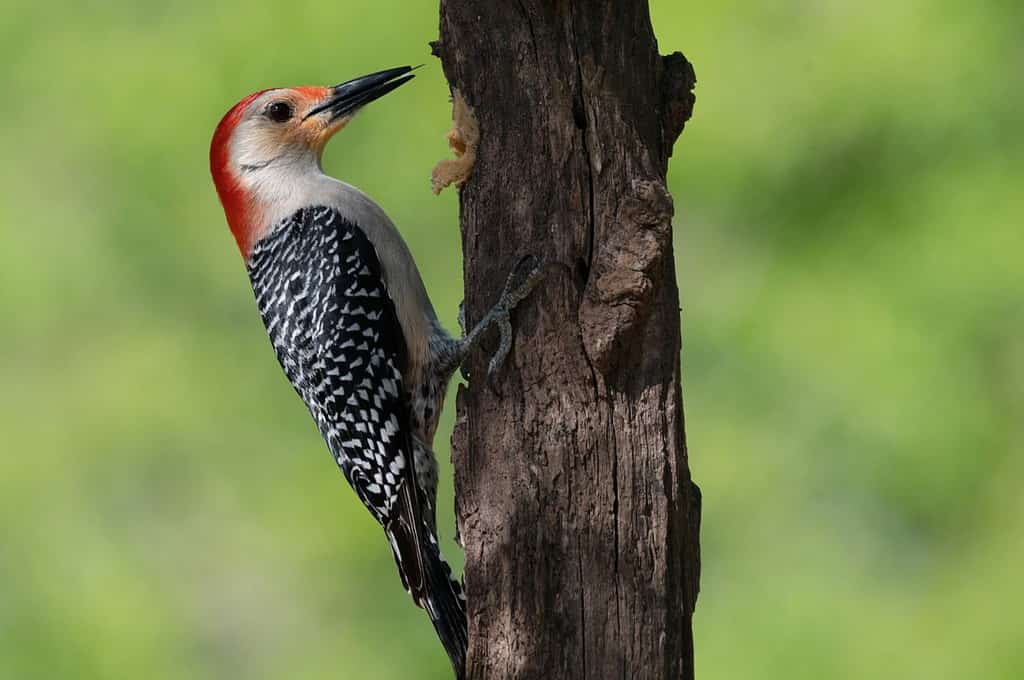
Red-bellied woodpeckers have long, sharp beaks for breaking through bark.
©Connie Moore/Shutterstock.com
There are seven species of woodpecker in Massachusetts. The red-bellied woodpecker is one of the most distinctive species because of its bright red head.
Red-bellied woodpeckers spend lots of time on tree trunks, pecking the bark for their prey. Interestingly, their tongues wrap around their brains. Their tongues protect them from the quick and forceful drumming of their pecking. Two of their toes point upward and two point backward to make it easier to crawl up tree trunks.
18. Tufted Titmouse (Parus bicolor)

Tufted titmice have soft gray feathers, including a large tuft of feathers on the head.
©Brian A Wolf/Shutterstock.com
These birds have bold personalities. They enjoy spending time at bird feeders, where they bully smaller birds away from the food.
Tufted titmice are seed foragers. They spend lots of their time with chickadees — their relatives.
These large gray and white birds have loud and harsh vocalizations. They aren’t afraid to use their voices to defend their territories.
19. White-Breasted Nuthatch (Sitta carolinensis)

White-breasted nuthatches get their names because of their skill with cracking open large seeds.
©J. A. Mikulich/Shutterstock.com
The most unique characteristic of the white-breasted nuthatch is that they crawl down tree trunks head first. They spend much of their time creeping over trunks, searching the crevices for food.
White-breasted nuthatches get their names because of how they eat. They crack open large and tough seeds, similar to cracking over nuts.
These birds sometimes visit bird feeders. Yet, they are much shyer than other species and are often challenging to spot. Because of their skittishness, they are likelier to snatch a single seed from the feeder and retreat to a “safer” spot to eat.
20. White-Throated Sparrow (Zonotrichia albicollis)

White-throated sparrows enjoy flocking with birds of other species.
©Fiona M. Donnelly/Shutterstock.com
These cute white-brown birds often live alone or in flocks of varying species. You’ll often find them living amongst dark-eyed juncos.
White-throated sparrows often spend their spring and summers further up north. As it gets colder, they migrate south to Massachusetts. Still, many of these birds live in Massachusetts year-round.
You may see these birds at feeders. Still, they’ll usually search for spilled seed on the ground below the feeders. White-throated sparrows are likelier to come to feeders surrounded by shrubs to hide in to feel safe.
Summary of 20 Birds that Spend Their Winters in Massachusetts
| Bird | Average Wingspan |
|---|---|
| American Crow | 33.5-39.4 inches |
| American Goldfinch | 7.5-8.5 inches |
| American Robin | 4.7-5.4 inches |
| Black-Capped Chickadee | 0.80 inches |
| Blue Jay | 13.4-16.9 inches |
| Canada Goose | 4.3-5.6 feet |
| Carolina Wren | 11.4 inches |
| Cedar Waxwing | 8.7-11.8 inches |
| Dark-Eyed Junco | 9.25 inches |
| Eastern Bluebird | 9.8-12.6 inches |
| European Starling | 15.75 inches |
| Herring Gull | 54-57.5 inches |
| Mallard | 32.3-37.4 inches |
| Mourning Dove | 5.6-5.9 inches |
| Northern Cardinal | 12 inches |
| Northern Mockingbird | 12.2-13.8 inches |
| Red-Bellied Woodpecker | 15-18 inches |
| Tufted Titmouse | 9-11 inches |
| White-Breasted Nuthatch | 7.9-10.6 inches |
| White-Throated Sparrow | 9 inches |
The photo featured at the top of this post is © Steve Byland/Shutterstock.com
Thank you for reading! Have some feedback for us? Contact the AZ Animals editorial team.






